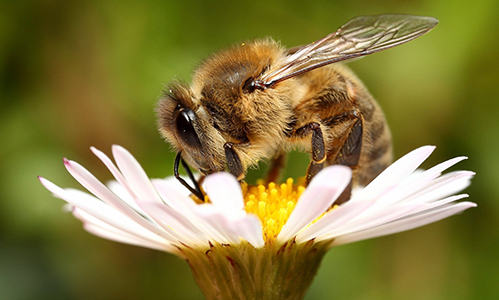
USDA photo.
“This isn’t a problem for 10 or 20 years from now – it’s happening right now.”
By Oliver Milman
Guardian (7/29/20)
A lack of bees in agricultural areas is limiting the supply of some food crops, a new US-based study has found, suggesting that declines in the pollinators may have serious ramifications for global food security.
Species of wild bees, such as bumblebees, are suffering from a loss of flowering habitat, the use of toxic pesticides and, increasingly, the climate crisis. Managed honeybees, meanwhile, are tended to by beekeepers, but have still been assailed by disease, leading to concerns that the three-quarters of the world’s food crops dependent upon pollinators could falter due to a lack of bees.
The new research appears to confirm some of these fears.
Of seven studied crops grown in 13 states across America, five showed evidence that a lack of bees is hampering the amount of food that can be grown, including apples, blueberries and cherries. A total of 131 crop fields were surveyed for bee activity and crop abundance by a coalition of scientists from the US, Canada and Sweden.
“The crops that got more bees got significantly more crop production,” said Rachael Winfree, an ecologist and pollination expert at Rutgers University who was a senior author of the paper, published by the Royal Society. “I was surprised, I didn’t expect they would be limited to this extent.”
The researchers found that wild native bees contributed a surprisingly large portion of the pollination despite operating in intensively farmed areas largely denuded of the vegetation that supports them. Wild bees are often more effective pollinators than honeybees but research has shown several species are in sharp decline. The rusty patched bumblebee, for example, was the first bee to be placed on the US endangered species list in 2017 after suffering an 87% slump in the previous two decades.
Swaths of American agriculture is propped up by honeybees, frantically replicated and shifted around the country in hives in order to meet a growing need for crop pollination. …
